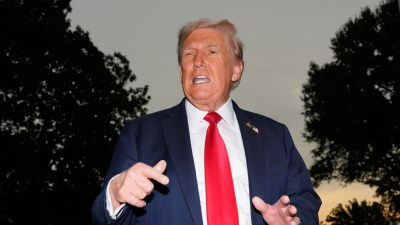Of telecom circles, and loops
Going by the completely contradictory newspaper reports on what happened in yesterday's meeting of the Telecom Commission, it's clear that...

Going by the completely contradictory newspaper reports on what happened in yesterday’s meeting of the Telecom Commission, it’s clear that the pitched battle between the telecom ministry and the Prime Minister’s Office is far from resolved. Indeed, a whole lot of politicking, and equally misleading reports, can be expected over the next few days, right till Independence Day, when the Prime Minister will formally announce the opening up of the hitherto-closed long-distance telephone market.
While the telecom ministry and its arms, the Department of Telecom and the Department of Telecom Services, are completely against allowing private sector players into the long-distance telecom market within a state’s boundary (this is called intra-circle traffic, in telecom jargon), the PMO is of the view that no private sector firm will enter unless the market is opened up fully. Actually, both are right, but more of that later.
Briefly, there are two kinds of long distance calls, one from a city in any particular state to a city in a different state altogether (inter-circle), and the second is from different cities which are in the same state (intra-circle). Of the total market of Rs 12,000 crore which is serviced only by the DoT/DTS today, close to Rs 8,000 crore comes from the intra-circle market, or calls from one city to another within a well-defined state. Now, clearly, if the Rs 8,000-crore intra-circle market is opened up, the DoT or the DTS will be hit by the increased competition, how badly of course, will depend on the nature of the competition. So, if it manages to stave off private-sector competition in the major part of the market, the DoT will have won a major battle.
Equally clearly, as the PMO is arguing, if private players are allowed in only the inter-circle market, the attractiveness reduces manifold. To take an example, let’s say, Bharti Telecom sets up an optic fibre link from Delhi to Mumbai. Now there is a lot of long-distance traffic originating from Maharashtra, and if Bharti isn’t allowed to carry this (under the only-inter-circle policy), it will affect its feasibility.
The DoT has justified not allowing intra-circle telephony by arguing that private sector operators themselves have bid huge license fees for various circles they operate in right now, and allowing new long-distance players in the intra-circle market will hit them badly. This is nothing but a red herring. For one, apart from Bharti in Madhya Pradesh and to some extent Hughes in Maharashtra, no private player has made any meaningful progress in laying out networks so far. And, anyway, when these same private operators wanted to move to a lower revenue-share based license fee structure a couple of years ago, this was done with the specific proviso that new players would be allowed to enter the market. Also, since the main player in each state is really the DoT/DTS, the move to restrict competition is clearly to help them and not the private players.
So why is this column endorsing, even if implicitly, the argument that intra-circle long distance telephony is best not opened immediately? After all, it is very clear that if the DoT/DTS is the only provider of long distance telephony, customers do get short-changed. And it is equally clear that the DoT/DTS is vastly-hyping up fears that they will be badly hit by the newcomers. The DoT/DTS, after all, has the largest network in place and it will take private players several years to roll out competing networks — several years after telephony was opened up, how many basic telecom firms can you think of that are doing well?
The reason for this column endorsing the DoT view is simple. Since, eventually, the government does have to privatise the DoT, and later the DTS, it would be foolish to announce the opening up of the market first — the announcement of opening up the market will hit the DoT/DTS, so why not combine it with a firm time-table of privatisation as well?
More important, while it’s easy to talk of breaking up DoT/DTS’ monopoly, what about assuring the DoT/DTS that the governments of the day will play fair by them, instead of siding with private players? Some weeks ago, this paper detailed how the PMO slyly tried to allow global telecom carrier FLAG to wriggle out of its exclusive contract with the state-owned VSNL — this was thwarted only after newspapers like this one raised a hue and cry. This paper also documented over the last fortnight, how the government was hitting the DoT/DTS by encouraging cartels in supply of equipment to them — once again, this was done to help private players.
And one just has to talk to MTNL officials to know how the same governments have tried, unofficially, to put every possible roadblock in its way of setting up cellular services in Delhi and Mumbai — MTNL’s proposed entry has send shivers up the spines of existing private cell firms in these metros.
So let’s sort out this little problem of the government batting against its PSUs as well, while we’re dismantling the DoT’s monopoly, shall we?



- 01
- 02
- 03
- 04
- 05



























